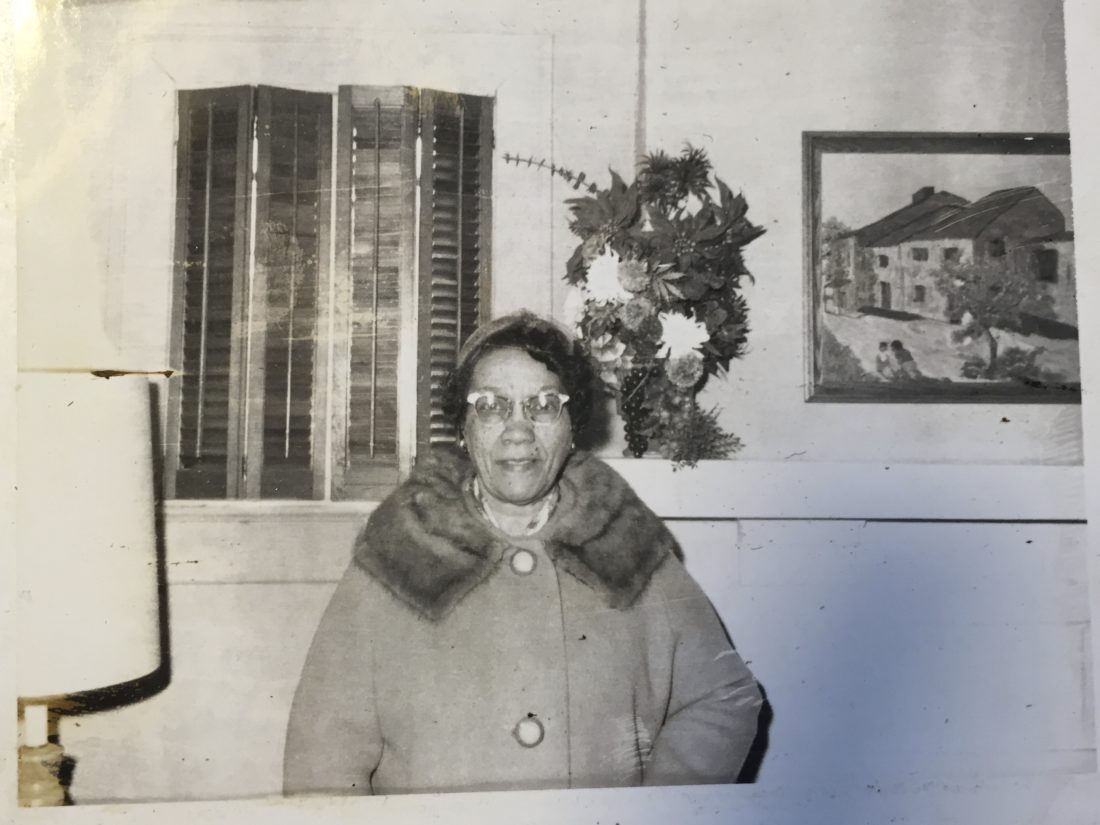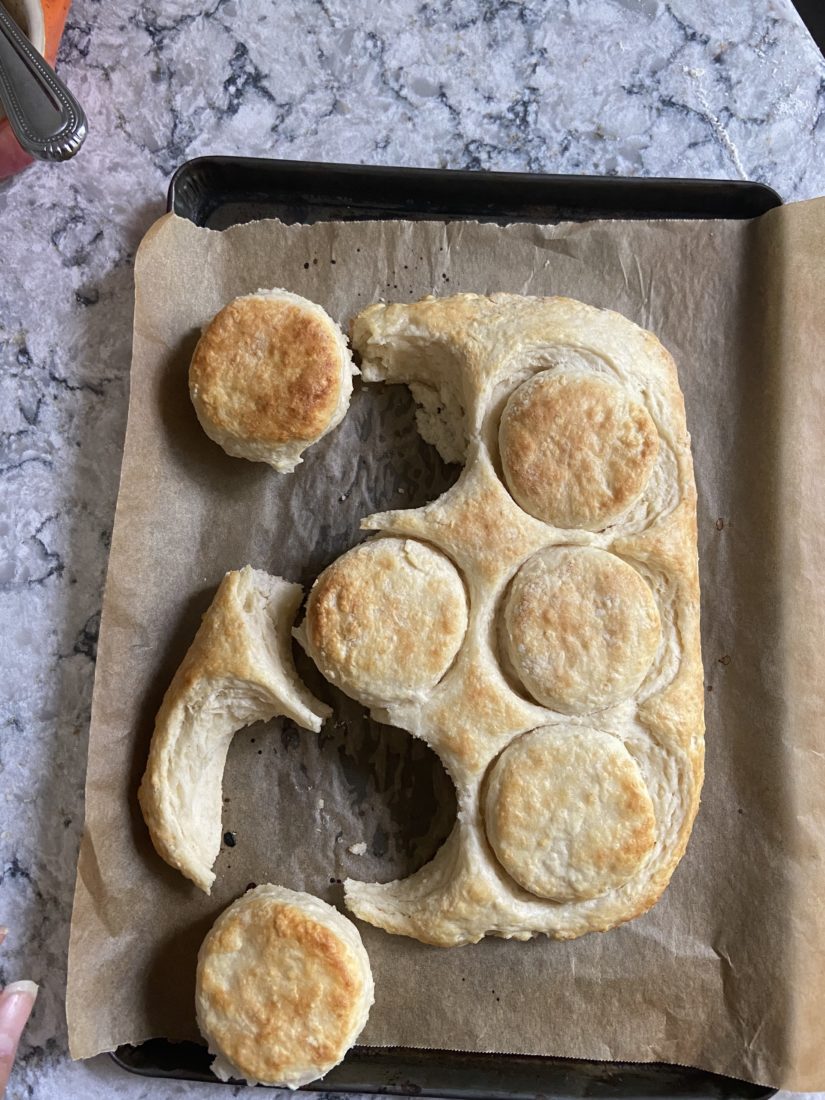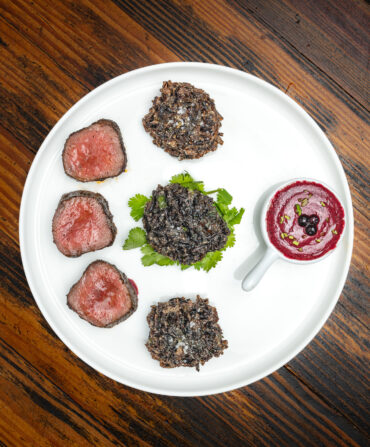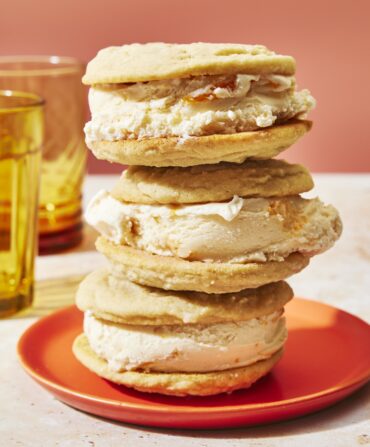A quick search for “biscuits” on the Garden & Gun website yields thirteen pages of results—recipes for buttermilk biscuits, beaten biscuits, drop biscuits, sweet potato biscuits, bacon fat biscuits, spicy chile-cheese biscuits, you name it. Where biscuits are concerned, we thought we’d seen it all—or close to it. Then earlier this month the food writer, recipe developer, and Atlanta-based biscuit queen Erika Council tweeted a picture of her great-grandmother’s edge-on biscuit-baking method. Like the majority of her followers, our curiosity was piqued. The early July post now has more than 500 comments and 2,700 likes. “I didn’t think no one had seen this method before,” Council says. “I’m actually blown away by the response.”

Her family’s no-waste technique requires rolling out the dough and placing it onto a baking sheet before punching out the biscuit rounds. Then, instead of tossing the excess dough, which can make for tough biscuits if it’s remolded and baked, you leave it right there, surrounding the biscuits, throughout the baking process. Once the cooked biscuits have cooled slightly, just pull away the scraps. “Anyone who’s still living in Goldsboro [North Carolina], who was living during my great-grandmother’s time, remembers her for her cooking—for her biscuits,” Council says. “But it was my Uncle Bobby who made them for us when we were kids. The adults would get the actual biscuits and the kids would get the scraps, which was fine with us.” Those curved scrap pieces make sopping up the last of the sausage gravy that much easier. And if you’re worried about the rise, don’t be. “I’ve never seen this method prevent rising,” Council says. Though her Uncle Bobby used this technique when making baking soda biscuits (see recipe below), Council says it works well with most standard biscuit recipes.

In Atlanta, Council’s biscuits (she prefers a baking powder version) have developed a passionate following thanks to her regular Saturday morning Bomb Biscuit pop-ups hosted at pitmaster Bryan Furman’s B’s Cracklin’ BBQ. A fire claimed the restaurant in early 2019, and until the pop-ups resume, her catering business has helped keep the biscuit-loving masses fed. But since we’re all staying home more and more these days, you’re probably not road-tripping to Atlanta for breakfast. To help you out, we caught up with Council, who shared a few of her favorite biscuit-making tips and tricks—along with some Bomb Biscuit news.
COVID-19 has hit folks in the restaurant business particularly hard. How has it affected Bomb Biscuits?
With COVID, the catering business sort of went away, so I launched the Biscuit Box. Right now, the boxes are available for delivery and pick-up in Atlanta. Our most popular box is our buttermilk box, which comes with six buttermilk biscuits and homemade seasonal jam. We have a vegan box and we’re working on a gluten-free one, too.
Will they be available outside Atlanta anytime soon?
I’m working on the process that would allow me to ship them. Hoping to be able to ship by September.
Until then maybe you can help us brush up on our biscuit basics. Have you always loved making biscuits? Or was it a passion you developed later in life?
I’ve always loved to eat them. They’re probably my favorite thing.
I’ve heard you say before that you were strongly influenced by both of your grandmothers. Your father’s mother, Mildred Council, better known as Mama Dip, started the popular Chapel Hill restaurant by the same name. Did you learn to make biscuits from them?
I actually spent the most time with my maternal grandmother—the one that’s not famous—and she made biscuits all the time. Of course, my paternal grandmother did too, but my granny Geraldine, she made them with me most often. It wasn’t that she sat down and taught me though, really. I mean, I helped, and I saw, and I picked up the process. It wasn’t a step one, step two, step three situation. My granny developed Alzheimer’s later, and I think I really started making them more to be connected to her, the more she deteriorated. I’d gone into a different profession than a lot of people in my family—a lot of my family is in the restaurant business—and I went to school for computer science. And sometimes with the stress of corporate America I needed a relief. It slowly developed into what it is now.
Okay, let’s get biscuit making…butter versus lard? Do you lean one way or the other?
If you can get leaf lard, I mean, I think that’s the best. Leaf lard, which is rendered pork fat from a certain area of the pig, just gives biscuits—and pie crust—that light flaky texture that I like. It’s different than the conventional lard you find in the store that’s normally been processed. On my maternal side, my great-grandmother is related to Adam Scott, of the original Scott’s barbecue in Eastern North Carolina, and all of her biscuits revolved around leaf lard, because she could get it so easily.
But that’s harder to for the average baker to get their hands on. Right?
Yeah. I rarely use lard in my biscuits now. Growing up most biscuits [we made] were half shortening—Crisco, basically—and butter, because butter was more expensive. Today, butter is my go-to.
Cast-iron skillet or sheet pan for baking?
For mass production, of course you have to use sheet pans. At home though, I like to use a skillet, and I always heat the skillet first. It’s an old trick.
Like you might with cornbread?
Yeah. Exactly. You heat the skillet first, so you get that nice crusty bottom.
What about folding? Do you fold your dough to create extra layers?
I do like to fold my dough. Folding the dough like an envelope helps create layers in the biscuits. And once I cut the biscuits out, I freeze them before I bake them—for about thirty minutes. It just makes the butter even more solidified and then it gives off that steam you want. Where cold butter is used, the steam from the melting butter expands between the layers of dough, creating pockets of air, yielding a flaky end product. Also, biscuits can last for a month or more in the freezer. Then all you have to do is pop them into the oven when you’re ready to bake.
And flour? Are you loyal to one particular brand?
I mean, White Lily is fantastic. My great-aunt Mabel was the first person I saw use White Lily flour. Typically, the flour we used [growing up] was very basic, though, like Piggly Wiggly all-purpose. We didn’t use anything fancy. These days, for business I use King Arthur because I can get it easily in fifty- and sixty-pound bags. You see so much stuff about biscuits out there on the internet, you know. I tell everyone…the thing about biscuits is that it takes a couple of times to figure it out. Find one recipe. Find an old basic recipe. If you can, find an old baking powder pamphlet. They usually include a little biscuit recipe and those really tend to stand the test of time. Learn that recipe with basic flour and basic butter. My mom will send me recipes for biscuits that call for Vermont butter, and I’m like, no, no, it’s just not necessary. I think it is important for people to take their time and learn. You got to learn what it feels like.
So, do you think the food world has a tendency to overcomplicate biscuits?
Yes. If it costs you $50 to make a biscuit, you have gone too far.
Is there any ingredient you would splurge on?
Cruz Farm buttermilk. I would ride my bicycle to Tennessee to get that buttermilk. It’s phenomenal. It’s the only buttermilk that tastes like the buttermilk my granddaddy used to drink with his cornbread.








